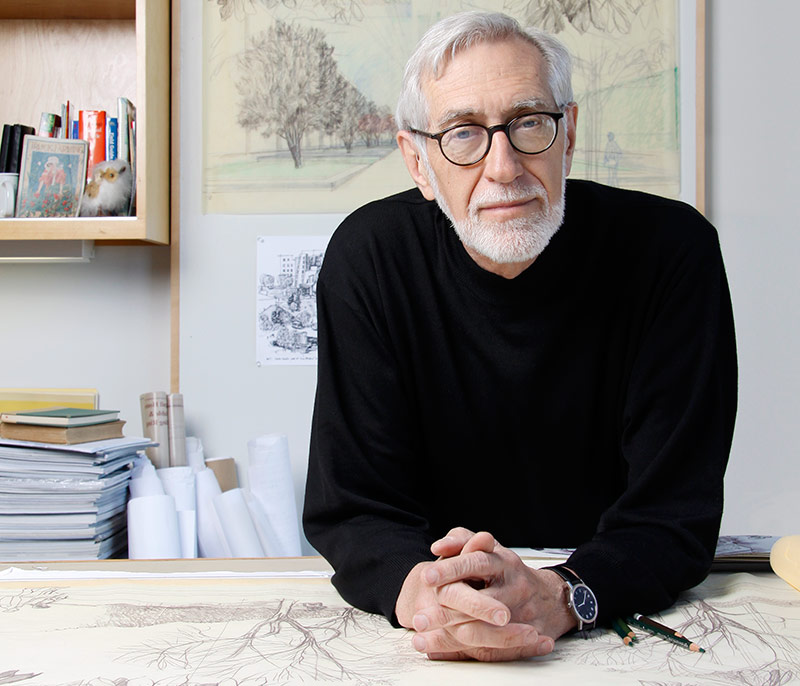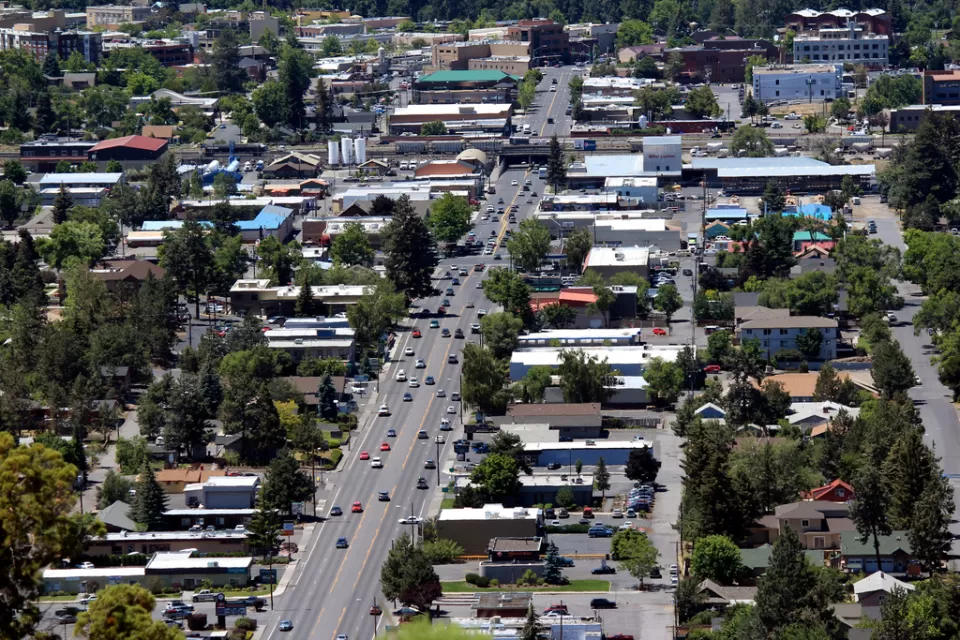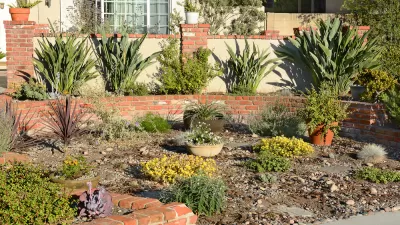Laurie Olin, the preeminent landscape architect, is being presented this week with the prestigious National Medal of Arts. The well deserved honor is a big deal not only for Olin and his firm, but for all landscape architects.

This is a big week for landscape architects. Laurie Olin, one of our profession’s most respected practitioners, educators and leaders will soon be standing on stage next to celebrities such as George Lucas, Herb Alpert and Elaine May, being presented with the prestigious National Medal of Arts by President Obama. Awarded by the National Endowment for the Arts, it is the highest honor given to artists by the US Government. Olin is the fourth landscape architect to receive the award, joining superstars of the profession Lawrence Halprin, Dan Kiley and Ian McHarg.

The White House press release describes Olin as a “preeminent landscape architect,” who is “renowned for his acute sense of harmony and balance between nature and design.” It goes on to say he has “dedicated his energy to shaping many iconic spaces around the world and to educating new leaders in his art.” Indeed. Such is common knowledge to landscape architects and, hopefully, most architects, but this recognition will surely come as news to many in the general public who have misconceptions about what landscape architecture is all about. In this sense, the honor is almost as important to us as it is to him.

The list of all Olin has achieved in his illustrious career would take up too much space here. But a few important highlights include the ASLA Medal, the highest honor given by the American Society of Landscape Architects (ASLA), Fellowship in the American Academy of Rome, and – just this year – the Thomas Jefferson Foundation Medal in Architecture. As you would imagine, his work has also won numerous awards. For every high-profile project we have seen splashed across design magazines and websites (think Bryant Park, Columbus Circle, the Washington Monument, and the Getty, for instance) there are many dozens of others he has overseen with equal care and focus, each improving the quality of life for people in cities, on campuses, and in parks, resorts and museums around the world. Add to these the work produced by those who have learned from his artistry, intellect and high ethical standards – his students at Penn and those professionals who have passed through his office –– and his legacy becomes perhaps the most significant of any landscape architect since Olmsted.

Olin’s collective work displays the heart and mind of a true urbanist. Regardless of scale – whether a major master plan or a small park or campus space – his landscapes are all about accommodating the layers of human movement through a given space while maximizing its experiential quality. In my opinion, he is the best ever at making places in the urban realm that succeed not only as models of efficiency, as they seamlessly integrate pedestrians and transit of all types, but also as fully realized landscapes that are as beautiful as they are functional. Columbus Circle in New York City is a perfect example of this, to which anyone who remembers what the space was like before it was redone can attest.

I have had the great fortune of knowing Laurie for over a decade. He has worked with me on several projects at Duke University and we served together on the jury for ASLA’s professional design awards. During this time, I have learned a lot from him about planning and design. I have also come to realize that his genius lies in his ability to make really complicated problems seem easy. The more complex, the better, it seems.
While there are plenty of designers who manipulate sites to better accommodate their art, Laurie chooses pragmatism over pretense, and creates spaces that are artful, yet rooted in a fundamental desire to simplify – and improve – the world in which we live. You often hear the terms elegant and timeless used to describe the landscapes he creates; this is because he designs specifically to the sites themselves, and not to any preconceived statement he is trying to make. There is no signature Olin style, no artifice that sets his work apart.

It would be unfair to heap all of this praise on Laurie and not acknowledge what he, himself, would have brought up a long time ago: he is very far from a one-man shop. His firm, OLIN (formerly Hanna Olin and then the Olin Partnership) is led by partners very capable of carrying the firm’s legacy into the future, and supported by one of the most talented groups of young designers working anywhere. Collectively, the firm has received major awards from ASLA, AIA, Cooper Hewitt, ULI, and others. Even so, I am confident that everyone at OLIN recognizes and appreciates his singular persona and identity.

To say there is something special about Laurie is a bit of an understatement. No matter who else is the room or what the topic of discussion is, his opinions are what inevitably seem to matter most. He possesses a gravitas that I can only imagine makes life a lot easier. As an example of this, several years ago he came to Duke to present his designs for a major campus landscape to our Board of Trustees, a group used to being presented to by famous architects and landscape architects, thus not prone to getting star-struck. However, once Laurie was finished with his presentation, and had them eating out of his hand and willing to approve anything he wanted, they did something I had never seen them do before – or since: they erupted into giddy applause. This completely unexpected reaction made me proud to know him; and it made me proud that I, like him, am a landscape architect.
That ovation was just a small dose of what he will be receiving this week.

Congratulations, Laurie. This honor is well deserved.

Maui's Vacation Rental Debate Turns Ugly
Verbal attacks, misinformation campaigns and fistfights plague a high-stakes debate to convert thousands of vacation rentals into long-term housing.

Planetizen Federal Action Tracker
A weekly monitor of how Trump’s orders and actions are impacting planners and planning in America.

Chicago’s Ghost Rails
Just beneath the surface of the modern city lie the remnants of its expansive early 20th-century streetcar system.

Bend, Oregon Zoning Reforms Prioritize Small-Scale Housing
The city altered its zoning code to allow multi-family housing and eliminated parking mandates citywide.

Amtrak Cutting Jobs, Funding to High-Speed Rail
The agency plans to cut 10 percent of its workforce and has confirmed it will not fund new high-speed rail projects.

LA Denies Basic Services to Unhoused Residents
The city has repeatedly failed to respond to requests for trash pickup at encampment sites, and eliminated a program that provided mobile showers and toilets.
Urban Design for Planners 1: Software Tools
This six-course series explores essential urban design concepts using open source software and equips planners with the tools they need to participate fully in the urban design process.
Planning for Universal Design
Learn the tools for implementing Universal Design in planning regulations.
planning NEXT
Appalachian Highlands Housing Partners
Mpact (founded as Rail~Volution)
City of Camden Redevelopment Agency
City of Astoria
City of Portland
City of Laramie































